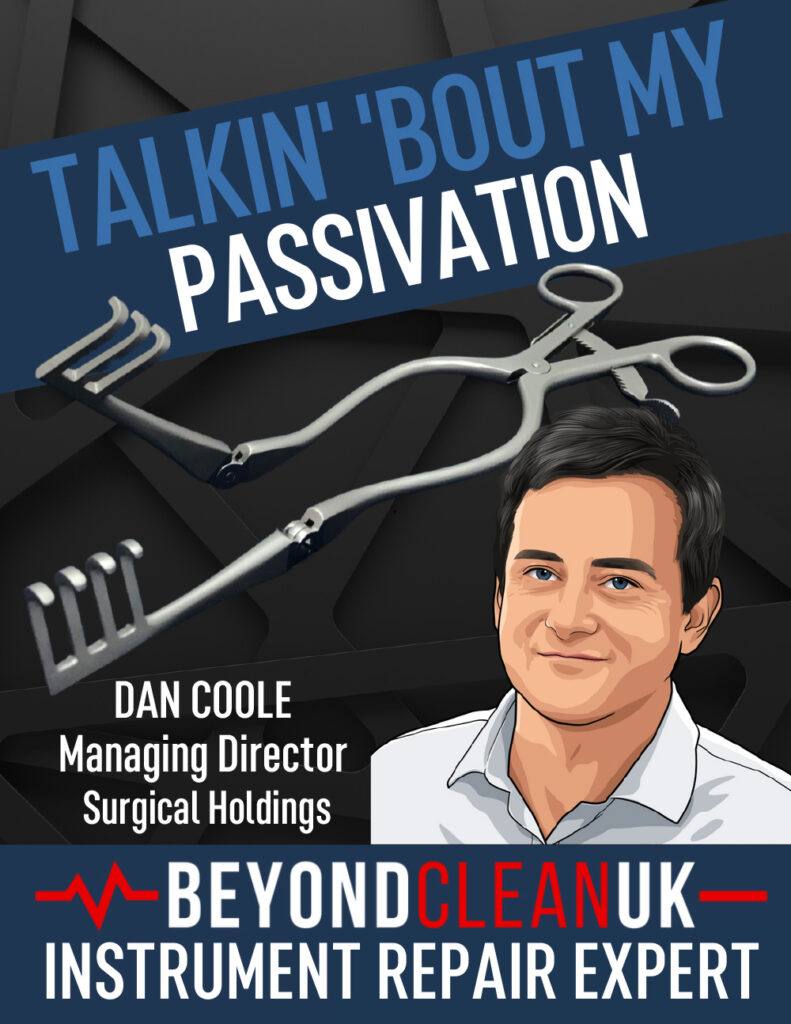in General
What is Passivation?
This week Surgical Holdings Managing Director Dan Coole has spoken to Beyond Clean UK about the topic of passivation as part of their Expert Series. Instrument Repair expert Dan, also chairs the Surgical Instrument Special Interest Section at the Association of British HealthTech Industries (ABHI)
So, what is passivation?
It’s a term we hear a lot in relation to surgical instruments. Being ‘passive’ is essentially sitting back and not reacting, and that’s what we want from stainless steels we’re using for instrument manufacture. In order to achieve this, we need a passive surface. Passivation is a natural phenomenon occurring between Chromium in stainless steel and Oxygen. Oxygen in the ambient air reacts with the Chromium, creating a Chromium Oxide passive layer. This layer is only between 1-3 Nm (Nanometres) thick initially but is thought to thicken over time. Natural passivation takes around 48 hours, assuming there are no contaminants or free Iron on the surface of the steel.

In manufacture and repair of instruments, we can artificially create this reaction by treating the stainless steel with a chemical (normally an acid). This process takes around 30 minutes normally, a great improvement on 48 hours! Acid passivation will generally remove surface contaminants, free Iron and create the passive layer. BS 5194 (British standards series for surgical instruments) recommends that passivation should take place through acid treatment or electropolishing. Manufacturers and repair companies accredited to ISO 13485 who are using passivation, are expected to have performed validation to prove their process is effective.
Although the newly established passive layer is chemically stable, it is susceptible to damage, through factors such as handling, usage, chemical damage, water damage, laser marking and repair work. Repair work, such as sharpening, interferes with the passive layer of the stainless steel. This is why it’s important to re-passivate after repair work is carried out, wherever possible; particularly if the instrument has been laser marked, although some in-situ chemical treatments may be used to oxidise laser marking. The consequence of not passivating after repair may be that free Iron from the disturbed surface of the steel reacts with Oxygen, causing rust – not what we want from a repaired device!
This 3-page PDF resource is available for download here: https://lnkd.in/eVyYbk_H
Dan is also speaking at the Beyond Clean UK’s inaugural conference, ‘Through the Looking Glass’ taking place on 31 March, 2023. More details on this free event coming soon….
